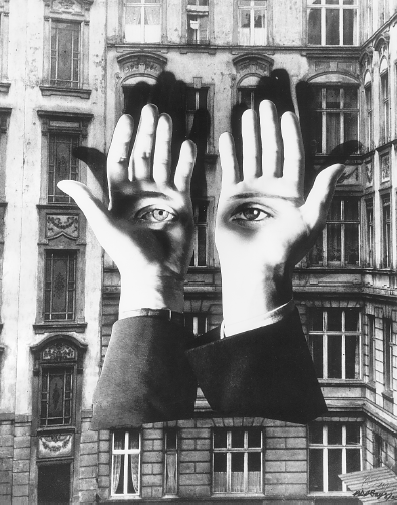CODES OF CONDUCT
Remarkably enough, the Weimar Republic, a time of extreme instability, burgeoning status insecurity, and dramatic oppositional tension, offered fertile ground for highly artificial elaborations of shame-based cultures. The loss of undisputed legitimacy on the part of social institutions was compensated for by the proliferation of codes of conduct, which in times of normative transformation are generally produced in great number. When social crisis takes hold, the external voices to which individuals have attended are no longer clearly audible and the interior seat of judgment is no longer credited. In such circumstances, codes of conduct operate as written receptacles for external directives to guide individual behavior. They appear in a number of forms: as paeans to the objectivity of the scientific attitude or how-to books on marriage; as the catechism of this or that political camp or Walter Serner's Handbrevier fur Hochstapler, a guidebook for the confidence man; as the pedagogical doctrine of architects or city planners; in the form of anthropological theory or Brecht's lyrical Devotions; or in the principles of the philosophy of law. The dynamic element in these codes of conduct is a desire for masking and concealment, which, in situations threatening shame, offers protection:
The mask transforms a person who has been exposed in a shaming way into a shameless performer; it turns one who is afraid of being perceived as weak into someone who is seen and feared as being strong.[50]
Amid the unmanageable complexity of postwar society, in situations of economic insecurity and uncertain social status, the rules inscribed in codes of conduct operate to draw elementary distinctions: between what is one's own and what is other; between inner and outer, male and female. They mark separate spheres; they regulate forms of expression and realize the self's equilibrium. They recommend and describe techniques of mimicry in the face of a violent world, subordinating everything to the protection of an individual's defenseless objectivity. They promise to lessen vulnerability, suggesting measures that will immunize people against the shame to which the collective subjects them.
Modern codes of conduct encourage people to acquire the skills they need for strategic self-enactment; the aim is the training of a functional ego. The codes represent an attempt to turn the effects of social distinction over to the personal direction of the individual, transforming the convivial arts of separating and combining into learnable techniques. In doing so, they generate two paradoxes, which typify the dual nature of objectivity. On the one hand, codes imply an acceptance of the individual's status as an object; on the other, they stubbornly hold out the possibility of making that same individual the master of his or her fate. Their affirmation represents a desperate attempt on the part of the new objectivity generation to restore to itself a sense of agency by exploring possible interventions into the workings of external influences. The goal is, through the cunning of concession, to participate in the forces that drive the historical process.
The strict observance of rules designed to vouchsafe distinction, however, necessarily causes the individual to lose hold of the levers of direction. Because the essence of the culture of conscience consists in the expectation that people will behave according to norms even without the threat of external sanctions, the new rules of behavior must keep consciousness alert to the uninterrupted presence of the supervisory gaze of the other (see Figure 1). The rules' promise of relief from self-directed responsibility easily gives way to an imperative of absolute alertness, and, as we shall see, in most cases the codes of conduct of the period set a mood of “chronic alert.” Shame cultures never come into existence to benefit individuals; they lead naturally to the next step, which is absorption into an institution: outside institutions, codes of conduct accomplish little. While suggesting the possibility of successful individual interventions into the social power struggle (through the mediation of rules), all codes actually occasion is the self-expression of a lifestyle. Codes of

The uninterrupted presence of the supervisory gaze of the other (Herbert Bayer, Einsamer Grofistadter [Lonely city dweller], 1932. With the permission of VG Bild-Kunst, Bonn, and Bauhaus-Archiv, Berlin.)
In the 19305 the description of the great shaming theater of social struggle rises to its literary high point. Elias Canetti's Crowds and Power offers a panoramic depiction of the mute constellations of power. Here is a comprehensive interpretive analysis of body positions that builds on descriptions of the shame culture by writers in the 192, os.[52] Canetti deciphers the sign language of subjugation and subordination. Fearing contact
In the image of the creature, the cool persona's central ambition to become a self-conscious agent of history deteriorates into its opposite. The suppressed sense of remaining subject to blind fate is the underlying motivation for its magical thinking. What the present book demonstrates is how uncannily close the two images are: the heroic images of the self-confident subject striding across the civil war landscape, carrying its slogans—natura facit saltus and distinguo, ergo sum—and the images of the creature, whose bodily existence dictates its perceptual and behavioral range.